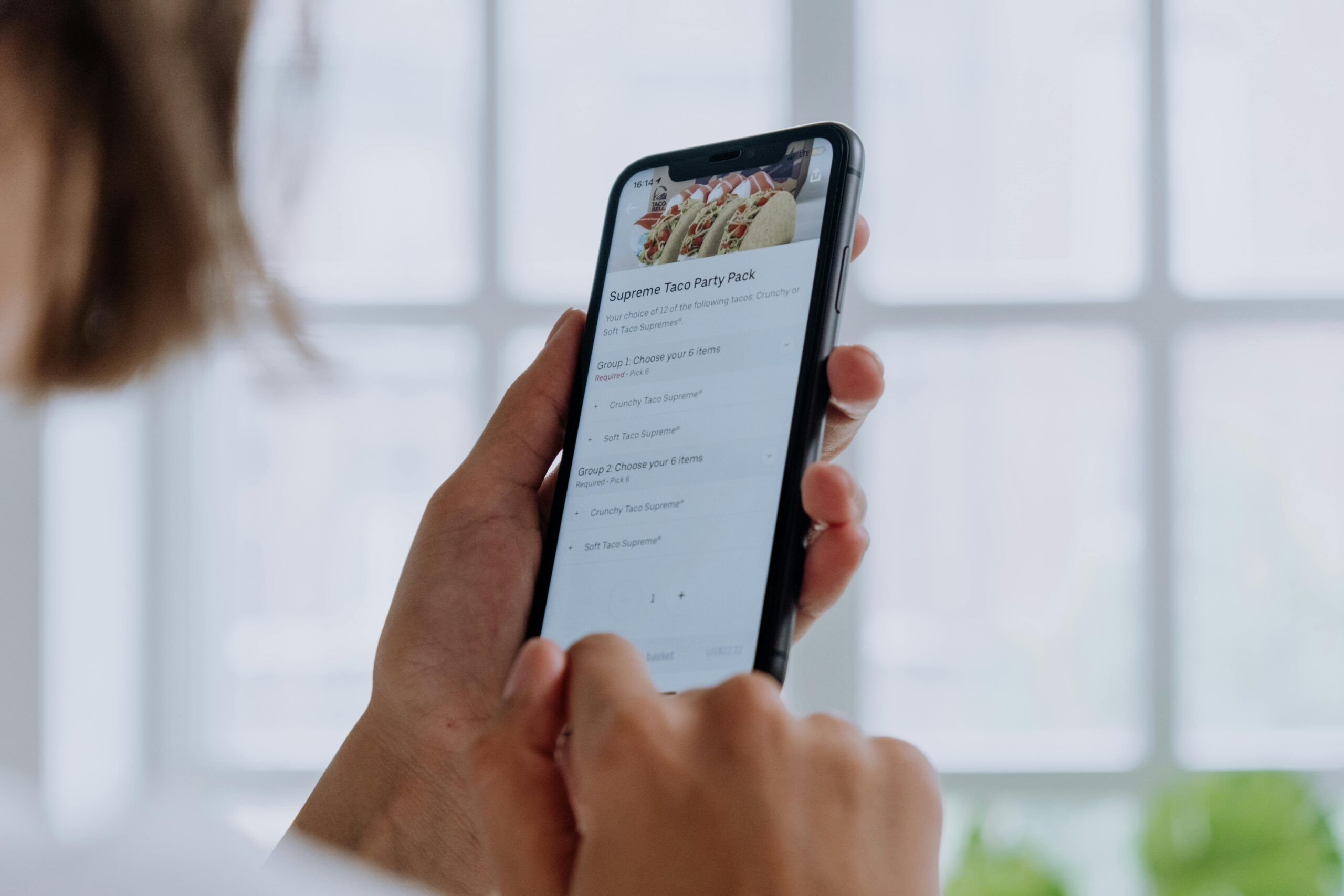- What Is An Order Management Process?
- What Are The Challenges In The Restaurant Order Management Process?
- Benefits Of A Centralized Order Management System
How Centralized Order Management Systems Work - Features To Look For In A System
- How Orders.co Simplifies The Restaurant Order Management Process
- FAQ
Managing orders across dine-in, phone, website, and delivery apps can overwhelm restaurant staff and lead to lost orders, delays, and reporting problems.
A centralized order management system like Orders.co collects all orders into one system, reduces manual work, cuts mistakes, and gives restaurant owners real-time data to improve operations.
Key takeaways
- Centralized order management combines all order channels into one system, cutting manual work and mistakes.
- Manual systems cause lost orders, delays, and errors, hurting customer experience and sales.
- Real-time menu updates prevent customers from ordering out-of-stock items.
- Automation improves accuracy, reduces food waste, lowers labor costs, and speeds up service.
- Real-time reporting helps optimize menus, staffing, and business decisions.
What Is An Order Management Process?
In a restaurant, the order management process covers every step of handling a customer’s order. This starts when the order is placed and ends when the food is delivered or served.
Restaurants today receive orders through many channels. These may include:
- Dine-in customers placing orders with servers
- Phone orders for takeout
- Online orders from the restaurant’s website
- Delivery apps like Uber Eats, DoorDash, and Grubhub
Each order must be received, recorded, sent to the kitchen, prepared correctly, and handed off to the customer or delivery driver. Payments are processed, inventory is updated, and the sale is recorded.
According to the National Restaurant Association (2024), 76% of restaurant operators say technology gives them an advantage over competitors, but many feel they could adopt more tools.
A digital order management system combines orders from online platforms, delivery apps, and POS systems into one place. Staff no longer manage multiple devices or enter orders manually, which cuts errors and speeds up service.
Orders.co collects all orders into a single system, so staff can focus on food and customers, not devices and corrections.
What Are The Challenges In The Restaurant Order Management Process?
Running a restaurant today means handling orders from many channels. Customers place orders in person, by phone, through your website, or through third-party delivery apps.
When these orders are handled on separate systems, the restaurant order management process becomes complicated and inefficient.
Lost Orders
Without a centralized order management system, staff often need to check multiple tablets or dashboards. Orders can easily be missed if a device loses connection, an app glitches, or the staff gets distracted during busy periods. Missed orders result in lost sales and frustrated customers.
Delays in Processing
A fragmented order management process forces staff to move between platforms to enter orders manually. This adds extra steps, slows down service, and creates delays in getting food to customers. When the kitchen waits for manually entered tickets, overall service time increases.
Human Errors
Manual entry often leads to mistakes. Staff may enter wrong items, miss special instructions, or input incorrect quantities. These errors create problems with food quality, increase waste, and lead to refunds or bad reviews. Errors also lower staff productivity as they spend time fixing mistakes.
Poor Reporting and Lack of Visibility
When orders are spread across different platforms, it becomes difficult to track business performance.
Restaurant owners can’t easily see which channels generate the most orders or which menu items perform best. Without complete reporting, it’s hard to make informed decisions to improve profits and operations.
A centralized restaurant order management system like Orders.co solves these problems by connecting all order channels into one platform. With centralized order management, staff can easily view, process, and fulfill all orders in real time, reducing errors and improving efficiency.
Keep your menu accurate across all platforms. With Orders.co’s Master Menu Management System, you can update and sync your menu across all delivery apps and your website in real time.
Benefits Of A Centralized Order Management System
Using a centralized order management process helps restaurants improve how they handle daily operations. It simplifies the entire order management process and removes many of the problems that happen with manual or fragmented systems.
Saves Time
With centralized order management, all orders from delivery apps, websites, phone calls, and in-person orders flow into one system.
Staff no longer need to switch between devices or enter orders manually. This saves valuable time during busy shifts and allows employees to focus on preparing food and serving customers.
Reduces Errors
Manual entry often leads to mistakes. A centralized system sends orders directly to the kitchen without the need for re-entry.
This reduces wrong orders, missing items, and incorrect modifications. Fewer mistakes mean fewer refunds, less food waste, and better customer satisfaction.
Improves Customer Experience
Accurate and fast order processing creates a better experience for customers. Orders are correct, wait times are shorter, and communication is clearer. Customers enjoy dependable and consistent service if they purchase online or eat in.
Real-Time Tracking and Reporting
A centralized order management process gives restaurant owners full visibility into their operations. They can see sales data across all channels, track popular menu items, monitor busy times, and review performance by delivery platform.
Real-time data helps owners make better decisions and adjust operations as needed.
How Centralized Order Management Systems Work?
A centralized online order management brings all order channels into one place. Instead of managing multiple devices and platforms, staff can see and process every order from a single dashboard.
Unified Order Collection
Solutions like Orders.co connect directly to your POS system, third-party delivery platforms (such as DoorDash, Uber Eats, Grubhub), your restaurant’s website, and phone orders. This allows all orders to be received and managed together.
Automatic Order Routing
Once an order is placed, the system automatically sends it to the correct station or kitchen printer. There’s no need for staff to manually enter orders or check multiple devices. Every order arrives in real time, ready for preparation.
Consistent Menu Management
Menu updates can be made across all platforms at once. If a menu item runs out, the system removes it from every ordering channel, preventing customers from ordering unavailable items.
Real-Time Monitoring
Managers and owners can track order volumes, monitor fulfillment times, and view sales performance in real time. This allows for faster decisions and better control over daily operations.
Features To Look For In A System
Choosing the right order management system is important for keeping restaurant operations organized and efficient. The system should handle orders quickly, reduce mistakes, and give owners the information they need to run the business effectively.
Automation
Look for a system that automates as many tasks as possible. Orders should flow directly from the customer to the kitchen without any manual entry. This cuts down on errors and speeds up service.
Integration with All Platforms
The order management process should integrate with your POS, third-party delivery platforms, online ordering website, and phone orders. A fully connected system allows staff to view and process all orders from one place, no matter where they come from.
Reporting and Analytics
Accurate reporting helps owners track sales, understand which items are selling, and see which platforms bring in the most orders. A good system provides clear reports that help with menu planning, labor scheduling, and marketing decisions.
Real-Time Updates
The system should update inventory, menu items, and order status across all platforms in real time. If an item sells out, it should automatically be marked as unavailable on every ordering channel. This prevents customers from ordering items that are no longer in stock.
Orders.co offers an order management process with full automation, real-time updates, complete integration, and simple reporting. Restaurant owners get full control over the entire restaurant order management process without adding extra work for their staff.
See how Orders.co supports restaurant owners with a complete menu management solution.
How Orders.co Simplifies The Restaurant Order Management Process
Orders.co simplifies the restaurant order management process by connecting all order channels into one system. This helps restaurants save time, reduce mistakes, and keep operations organized.
Centralized Order Management
Orders.co collects orders from:
- POS systems
- Third-party delivery platforms (DoorDash, Uber Eats, Grubhub, etc.)
- Online ordering websites
- Phone orders
Staff can view and process all orders from a single dashboard. No more switching between devices or manually entering orders.
Real-Time Menu and Inventory Updates
When a menu item sells out, Orders.co automatically updates all connected platforms. Customers only see available items, which prevents canceled orders and customer complaints.
Automation and Error Reduction
Orders go directly to the kitchen without manual entry. This lowers the chance of mistakes, speeds up preparation, and improves accuracy.
Reporting and Business Insights
Orders.co provides clear reports showing:
- Sales by channel
- Top-selling menu items
- Busy times and peak order periods
Restaurant owners get the data they need to make decisions and improve operations.
Orders.co provides restaurants with the complete order management system they need to stay organized and efficient without adding extra work for staff.
Want to learn more about how Orders.co helps restaurants manage orders?
FAQ
1. What is a restaurant order management process?
The restaurant order management process includes receiving, processing, and fulfilling customer orders. This covers dine-in, delivery apps, online orders, and phone orders. A well-organized process helps reduce mistakes, improve speed, and keep customers satisfied.
2. How does a centralized order management system work?
A centralized order management collects orders from all channels into one platform. It connects with your POS, delivery apps, online ordering website, and phone orders. Staff manage all orders from a single dashboard, which saves time and reduces errors.
3. Why do restaurants need an online order management system?
An online order management process helps restaurants handle orders from delivery apps and online platforms efficiently. Without it, staff must juggle multiple tablets and systems, increasing the risk of lost orders and mistakes. A centralized system helps avoid these problems.
4. How can order management systems help reduce human errors?
Order management systems automate order flow. Orders are sent directly from customers to the kitchen without manual entry. This removes extra steps where mistakes often happen, improving order accuracy and reducing food waste or refunds.
5. What reporting features should a restaurant order management system include?
A good system provides real-time sales reports, order volume by channel, top-selling menu items, and peak order times. This helps restaurant owners make informed business decisions and improve overall performance.



